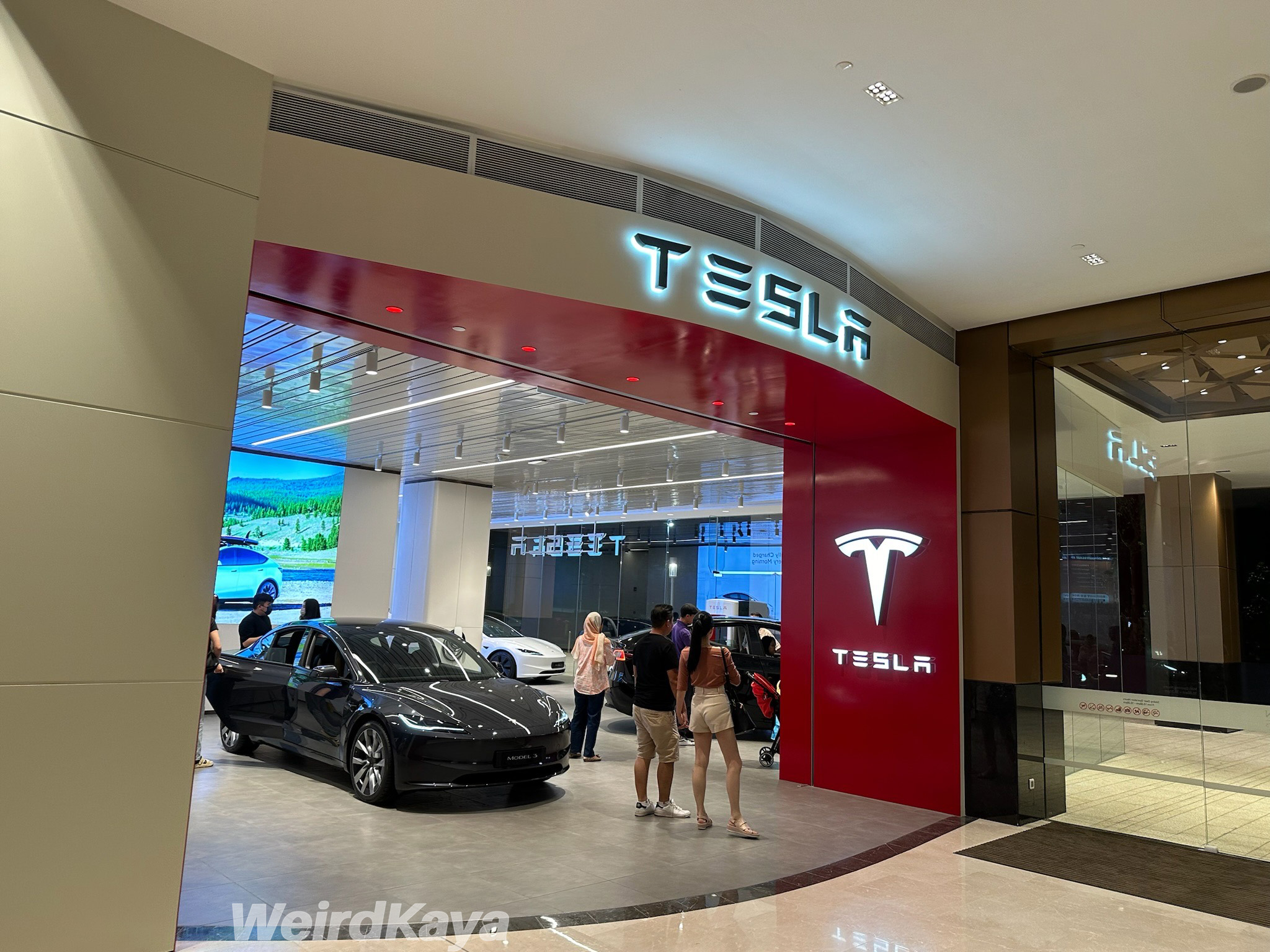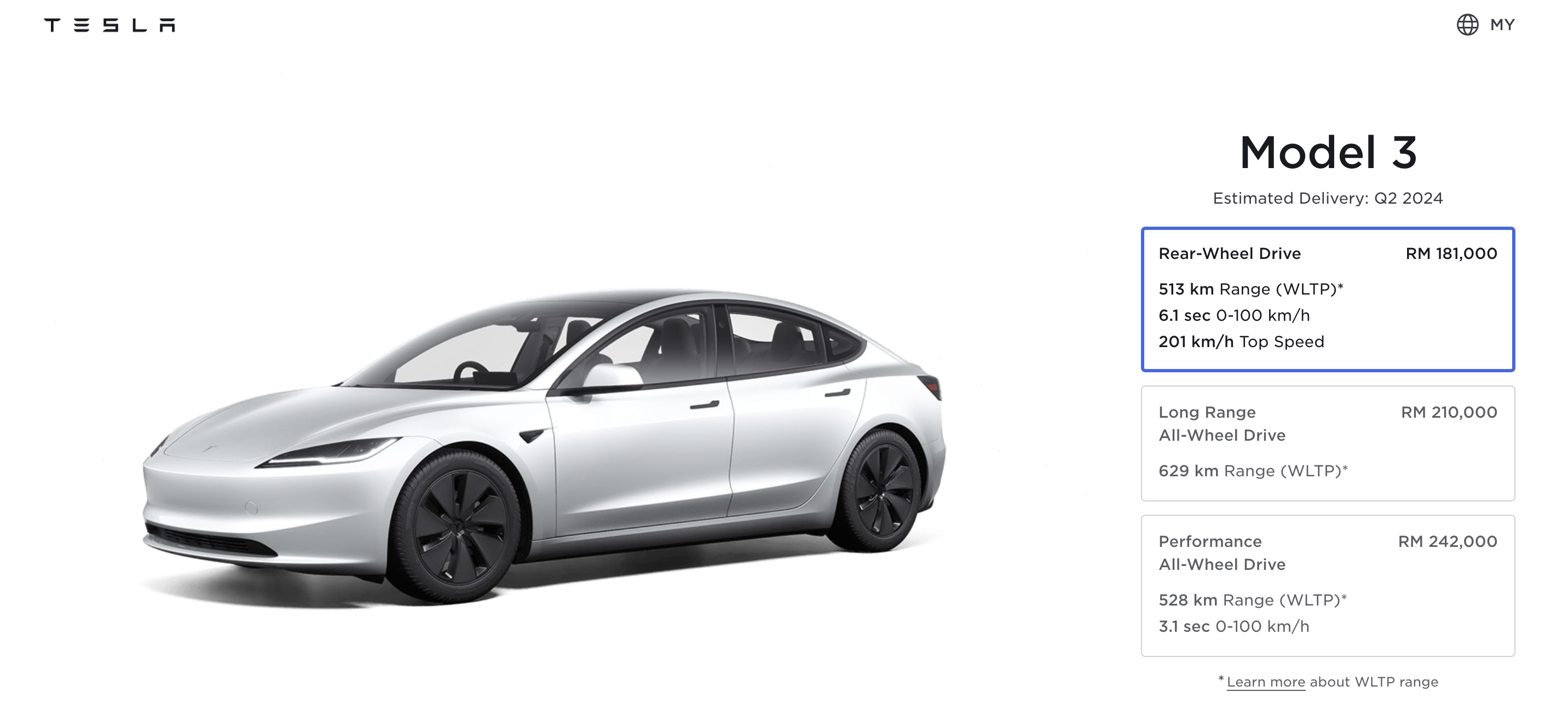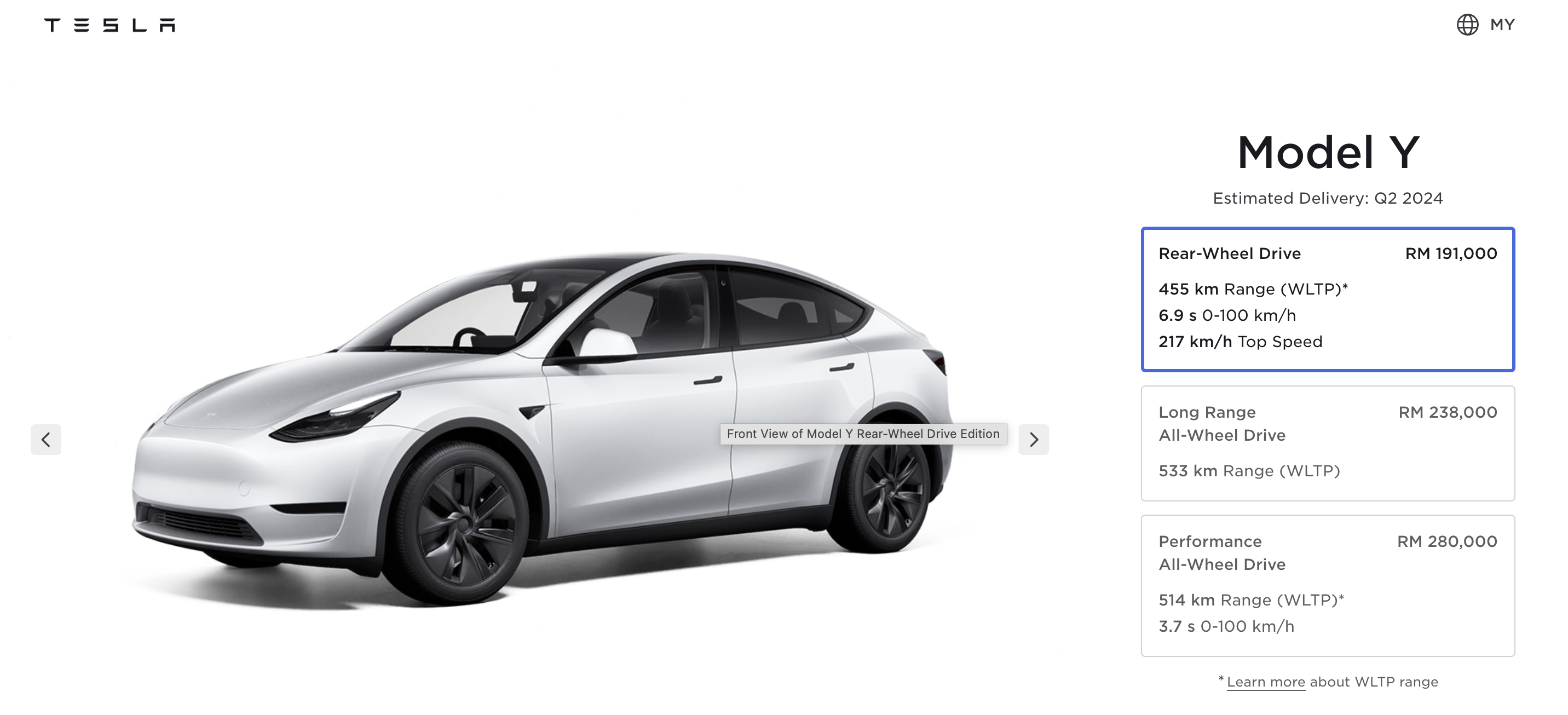Tesla Malaysia has announced a significant price reduction of RM8,000 for its Model Y and Model 3 vehicles just six months post-launch in Malaysia.

New Pricing For Tesla Model Y & Model 3
After the price cut, the latest pricing for both the Model Y and Model 3 is as follows:
Model 3:
Model 3 Rear-Wheel Drive:
Previous: from RM189,000
Now: from RM181,000
Model 3 Long Range All-Wheel Drive:
Previous: from RM218,000
Now: from RM210,000
Model 3 Performance All-Wheel Drive – RM242,000 (unchanged)

Model Y:
Model Y Rear-Wheel Drive
Previous: from RM199,000
Now: from RM191,000

Model Y Long Range All-Wheel Drive
Previous: from RM246,000
Now: from RM 238,000
Model Y Performance All-Wheel Drive
Previous: from RM288,000
Now: from RM280,000

What happened?
Globally, electric car sales have been robust, with significant year-over-year growth. In 2023, global electric car sales surged by 35% to nearly 14 million units, largely driven by demand in China, Europe, and the US.
However, in 2024, while the overall EV market continues to grow, Tesla has faced challenges with its market share being eroded by competitors like BYD.
In the context of Malaysia, this price reduction could potentially make Tesla vehicles more accessible and attractive to a broader segment of consumers, enhancing its competitive position in a rapidly expanding Malaysian EV market.
Read also: Tesla Malaysia Unveils Refreshed Model 3, Codenamed ‘Highland,’ Starting at RM189k
However, this move might also reflect the need to invigorate sales in light of these global pressures and shifting market dynamics.
Tesla revise prices in other main markets too
Tesla’s strategic price cuts extend beyond Malaysia, touching major markets like China and the United States. These reductions reflect a tactical approach to stimulate demand amid broader economic pressures and heightened competition.
In China, Tesla has been particularly aggressive with price reductions. The Chinese market is crucial for Tesla due to its size and the rapid growth of local EV manufacturers like BYD and Nio, which offer competitively priced models.
To maintain its market presence, Tesla has adjusted its prices to stay attractive to Chinese consumers, who have a growing array of choices.
Similarly, in the United States, Tesla has implemented price cuts as part of its strategy to boost sales and counteract the reduction of federal EV subsidies.
These subsidies have historically helped elevate the attractiveness of EVs by lowering the consumer cost barrier. With these incentives phasing out, Tesla’s price reductions aim to keep its vehicles financially accessible to a broader customer base.
Read more: Tesla Malaysia Cuts Prices for Model Y & Model 3 by RM8,000 Just Six Months After Launch


